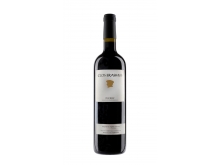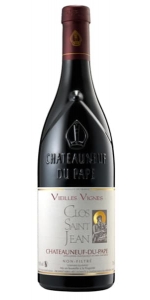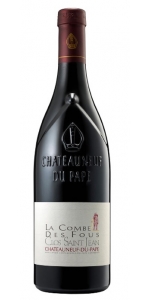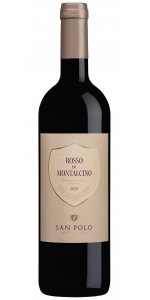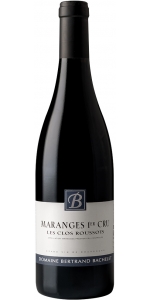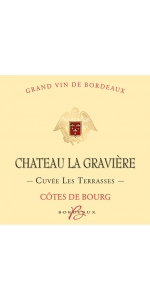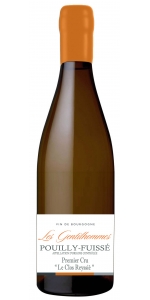Clos i Terrasses Clos Erasmus 2021
3 bottles with free shipping for: $897.00
6 bottles with free shipping for: $1,770.00
12 bottles with free shipping for: $3,480.00
| BUY MORE! SAVE MORE! | ||||||||||||||||||||
|
| Country: | Spain |
| Region: | Priorat |
| Winery: | Clos i Terrasses |
| Grape Types: | Grenache Syrah |
| Organic: | Yes |
| Vintage: | 2021 |
| Bottle Size: | 750 ml |
This wine is one of the absolute benchmarks for fine Priorat, and a reference in Spain. Sourced from 3 small vineyards in the Gratallops, this blend of Grenache and Syrah undergoes strict berry selection and is fermented and aged for 20 months in barrels and amphorae. It is all about dense fruit, exotic spice and licorella minerality, with a freshness and elegance are truly singular, even among the top wines of the appellation.
Folly takes many forms. Driven by whim, restlessness, or passion, it typically marks a pivot in one’s life that only the benefit of hindsight can judge. In 1988 Daphne Glorian spent her entire life’s savings on 17 terraces of vines situated in a wooded hollow just outside the village of Gratallops. Her accomplices in this folly? – René Barbier, Álvaro Palacios, Carles Pastrana, and Josep Lluís Pérez. Together they pooled their resources and newly-acquired vineyards, settling in a region rich in history but without a reputation for fine wines.
In 1989 the modern Priorat was born: one wine but five different labels, each of which would become known worldwide: Clos Mogador, Clos Dofi, Clos Martinet, Clos de l’Obac, and Clos Erasmus. Clos Erasmus is fittingly named after the famed humanist and Renaissance author Desiderius Erasmus, a favorite writer of Daphne and her humanist father, and in whose timeless work – In Praise of Folly – can Daphne’s hard work in the Priorat be fully understood.
Born in Paris but of Swiss-German ancestry, Daphne Glorian spent her early years shuttling between Switzerland and France before settling in Gratallops. “I like to make lists of what needs to be done each day, and in Spain, I’m happy if I manage a quarter of it,” is how Daphne explains her life now in Spain.
While studying law in Paris in her 20s, Daphne first discovered fine wine while working as the office manager for Kit Stevens MW. What was simply a job to make ends meet would soon become her advocation. Shortly after taking the job with Kit, she met René Barbier and Álvaro Palacios, who were both so passionate about a place called the Priorat that she decided she needed to visit and see it for herself.
The early years of making wine in the Priorat were not easy. The rugged landscape and poor soils yielded only small quantities of wine, and the region was unknown outside of Catalunya. From its start, Clos Erasmus has been a wine made from younger vines blessed with being planted in the right spot. Farming has always been sustainable, and with the addition of Ester Nin as Daphne’s viticulturist in 2004, Clos i Terrasses has been converted to biodynamic farming.
In her early vintages, Daphne relied on her friends René Barbier and Álvaro Palacios for advice, but guided by her instincts and her training in Burgundy, where she first discovered wine, her wines have evolved to become some of the most sought-after references for the Priorat – and along the way, some of the most desired wines in the world. Despite having received multiple 100-point scores from top critics, Daphne has kept Clos i Terrasses modest in size and has not dramatically increased her production of Clos Erasmus, preferring to create a second, equally expressive wine, Laurel.
Today Daphne’s property goes by the name Clos i Terrasses to recognize the Clos upon which her fame was established and the terraces that she currently farms. The original folly, Escales is a 1.7-hectare parcel planted originally on seventeen terraces carved out of a steep slope and surrounded by woods. North-facing, its seemingly inauspicious aspect creates the perfect conditions for the slow ripening of Garnatxa. The top-most seven terraces of Escales were regraded to costers in 2019 as the Syrah originally planted here began to die due to the heat. This new portion of Escales was subsequently regrafted to Garnatxa, making this site now 100% Garnatxa.
In the early 1990s, Daphne added Aubagues and Socarrats to her holdings. Aubagues was once partially terraced, but this section was regraded to costers and replanted with Garnatxa in 2013. Now totaling 2.5 hectares, Aubagues has a diverse range of exposures that span two ridge tops, with Garnatxa (56%) planted in the exposed, warmer parts of the vineyard and Syrah (44%) on the relatively more sheltered north-facing slopes.
Socarrats is 3.12 hectares and planted with Garnatxa (62%), her few remaining vines of Cabernet Sauvignon (28%), and Syrah (10%). This site runs up and over a hillside from southeast to northwest. Les Vaques is a north-facing part of Socarrats purchased in 1998, and where Daphne has an additional 1.4 hectares of Garnatxa planted in 2018 & 2019.
Guinarderes, acquired in 1998, is 2.9 hectares in size. Facing south and southeast, this is her warmest site and the first to be harvested. Guinarderes is planted with Garnatxa (60%) and Syrah (40%).
Purchased in 2011, Solanes is a steep 11-hectare plot situated at the foot of a dramatic sandstone butte in the village of El Lloar. In 2020 Daphne planted 1.72 hectares of Garnatxa on the south-facing portion, while the corresponding northeast-facing slope would be ideal for Syrah in the future. Despite its size, 2 hectares are already planted with olive trees – the source for her olive oil – leaving only about 4.3 hectares suitable for future planting.
Together these vineyards form Clos i Terrasses. A modest-sized estate by the standards of the modern Priorat, Daphne strives to preserve the ideals that led her to her original folly – the unique and distinct character of Clos Erasmus made possible through a strict selection of sites, fruit, and the barrels in which this nascent wine is aged – as well as the creation of a separate cuvée, Laurel which has its own unique personality and terroir expression.
Clos Saint-Jean Chateauneuf Du Pape Vieilles Vignes is made from a Grenache, Syrah, Mourvedre, Cinsault, Vaccarèse and Muscardin, the Châteauneuf-du-Pape Vieilles Vignes is made from old vines located in and around Le Crau. The Grenache is aged in concrete for 12 months while the remainder is aged in demi-muid.
Review:
This has good concentration and energy to the dense core of dark fruit and bitter cherry, with great poise and elegance despite its ripeness (an impressive feat for the vintage). Guided by finely crushed mineral accents and tannins, this reveals pretty high-toned floral notes and leafy tobacco. Grenache, Syrah, Mourvedre, Cinsault, Vaccarese and Muscardin. Drink now through 2032. 900 cases made.
-Wine Spectator 95 Points
Clos Saint-Jean is a 41-hectare estate in Châteauneuf-du-Pape run by brothers Vincent and Pascal Maurel. Considered by many critics and wine-writers as the preeminent estate espousing the modern style of winemaking in Châteauneuf, this cellar is one of the oldest in the region, having been founded in 1900 by the greatgreat-grandfather of Vincent and Pascal, Edmund Tacussel. A short time after its founding and well before the AOP of Chateauneuf-du-Pape was created in 1923, Edmund began bottling estate wines in 1910.
The farming at Clos Saint-Jean is fully sustainable due to the warm and dry climate, which prevents the need for chemical inputs. Instead, Vincent and Pascal employ organic methods for pest control, mainly pheromones, to prevent pests from taking up residence in their vines, a process called amusingly enough in French, confusion sexuelle. The vines tended manually, and harvest is conducted in several passes entirely by hand.
Combe des Fous literally means, the hill of the fool. The hill, in this case, is located in the far southern reach of Le Crau which was left barren for many centuries because the layer of galets was so exceedingly deep that everyone assumed vines could never survive there. The fool in this situation is Edmund Tacussel, the great-great-grandfather of Vincent and Pascal Maruel who planted a Grenache vineyard on this site in 1905. That old-vine Grenache form the heart of this cuvée with a small amount of Syrah, Cinsault and Vaccarèse. La Combe des Fous is only made in the best vintages.
Review:
This has good concentration and energy to the dense core of dark fruit and bitter cherry, with great poise and elegance despite its ripeness (an impressive feat for the vintage). Guided by finely crushed mineral accents and tannins, this reveals pretty high-toned floral notes and leafy tobacco. Grenache, Syrah, Mourvedre, Cinsault, Vaccarese and Muscardin. Drink now through 2032. 900 cases made.
-Wine Spectator 95 Points
Bright and glossy ruby red in color. On the nose it reveals aromas of small fresh berries and a trace of sour cherry, melded with hints of blackberries and black cherries, followed by a hint of vanilla. A fragrant wine with satisfying intensity. On the palate it is warm, smooth and a medium-bodied with finely-balanced tannins. Dry and sinewy yet fresh with a persistent, aromatic finish.
It naturally accompanies dishes that are typical of Tuscan cuisine with its bold, authentic flavors, such as pasta and risottos made with mushrooms or truffles, pork, grilled meats and medium-matured cheeses.
Review:
Notes of ripe cherries, dried flowers and walnuts with hints of anisette and licorice. Medium- to full-bodied, compact and dense with creamy tannins and steady acidity. Weighty and structured. Drink or hold.
-James Suckling 91 Points
Bertrand Bachelet Maranges Rouge 1er Cru Les Clos Roussots is made from 100 percent Pinot Noir.
The Maranges appellation is the youngest of the Côte de Beaune family, making its debut in May 1989. It spans three villages: Dezize-lès-Maranges, Cheilly-les-Maranges and Sampigny-les-Maranges. Several hills and slopes make up the appellation; they face south/south-east, at an altitude of between 200 and 400 meters. This appellation produces mainly red wines comprising 95% of total production.
The Maranges 1ers Crus are spread over seven distinct terroirs: "Les Clos Roussots", which represents the second largest terroir of the appellation, spans the Cheilly-les-Maranges and Sampigny-les-Maranges areas.
The wine boasts a beautiful bright red color. The nose provides subtle harmony between red and black fruits, spices and vanilla. On the palate, this wine is both solid and fresh, harmonious and bold.
Enjoy with a veal roast and sweet potatoes or matured cheeses.
Graviere La Rouge Cuvee les Terrasses is made of 70% Merlot and 30% Cabernet Sauvignon
Deep red color with a narrow purple rim. Attractive aromas of ripe, juicy cherry and blackberry over spice, integrated toasted aromas. The palate is balanced and full-bodied with supple tannins, displaying rich cherry flavors combined with gentle toasting characters and a touch of spice. The finish is lasting with a bitter almond aftertaste.
Average age of the vines is 25 years.
Upon arrival at the winery, only the best grapes were selected using a sorting table.
Skin contact maceration during 2 weeks in temperature controlled vats.
75% of the final wine was aged in stainless steel tanks with French oak staves and blended with 25% of wine aged in barrels.
Serve with red, white meats, poultry and fine cheeses.
Les Gentilhommes Pouilly Fuisse Premier Cru Clos Reyssier is made from 100 percent Chardonnay.
A gentilhomme is a gentleman characterized by his delicacy, thoughtfulness, and courtesy. "Les Gentilhommes" was created by brothers Richard and Stephane Martin as brand embodying the gentleman's character combined with Burgundian know-how.
From the work in the vineyard to the vinification in barrel, they are inspired to share these noble values. Quality, authenticity and long family tradition are the foundation of these wines.
Les Gentilhommes Pouilly Fuisse Premier Cru Clos Reyssier's description
- back
Deep color of violet and black tones. On the nose, it shows aromas of black tea, violets, blueberries and dark berries. It presents freshness, fine grain tannins and minerality on the palate.
Hall Wines The Kathryn Hall Cabernet Sauvignon is made from 96% Cabernet, 4% Merlot.
The 2017 Kathryn Hall is deep, dark ruby in color and elegantly balanced with layered aromas of concentrated blackberry, freshly turned earth, and a hint of warm, spicy oak. The palate is fruit-forward with underlying notes of rich cocoa and leather. Layers of black fruit, nutmeg, cassis and brooding earthy notes are abundant. Supple, seamless tannin abounds, and the wine finishes with an incredible dark fruit feed-back that lasts several minutes.
Review:
The 2019 Cabernet Sauvignon Kathryn Hall is a blend of 95% Cabernet Sauvignon and 5% Merlot, brought up mostly in new barrels. It’s a killer bottle of wine offering lots of ripe black fruits intermixed with savory herbs, melted chocolate, and tobacco. Medium to full-bodied on the palate, it shows the lush, round, velvety style of the 2019 vintage and is already impossible to resist. It’s going to evolve for 15+ years if well stored.
-Jeb Dunnuck 95 Points

